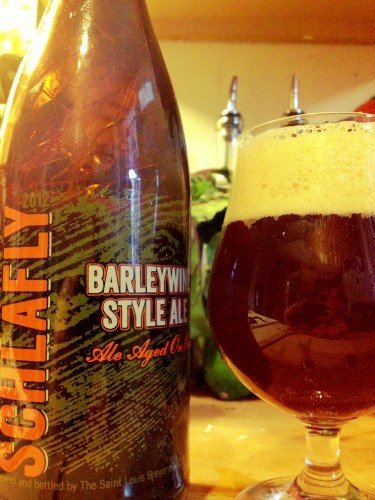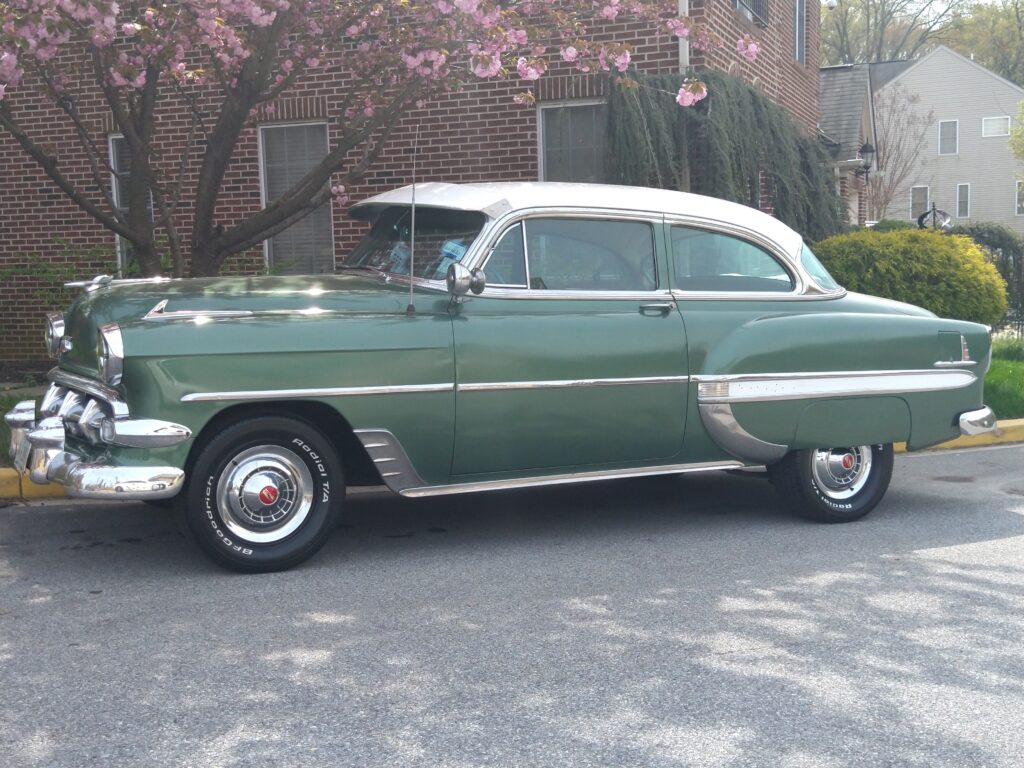
Jack Van Paepeghem works at Meridian Pint and is a Certified Cicerone® You can read his previous post about cellaring here.
Generally I like to keep these posts relevant to the drinking season we are currently in (pilsners in Summer, Octoberfests in Fall, and so forth), but seeing that it is now Spring, writing about barleywines may seem out of place. However, as I write this, it is nearing the freezing point outside and this snifter in front of me is perfectly warming and perhaps making me rethink my hankering for the warmer months ahead. “Barleywine” is a confusing term, as it implies perhaps a muddled fusion of grain and grapes which without further information, sounds not so appetizing. We have the English to both blame and thank for this wine-strength malt beverage and like all things American, we have embraced it and kicked it up a notch and created an entirely new monster which has become the brewer’s shining mark of achievement when well executed. Like the beer itself, the history of barleywine is deep, complex, and full of nuances which transform with age.
The first officially designated “barleywine” on the market was Bass Brewery’s Bass #1 in 1854 in Burton-upon-Trent, England. The beer had an ABV of at least 10%, used only pale malt but was darker due to an over two-hour boil, and had a huge hop bitterness like an IPA. But the making of “big beers” like barleywine go back much further. When beer was produced on a domestic scale, beers of varying strength were made from a single mash in order to have a younger beer for easy and sanitized drinking, one of higher alcohol for slightly longer holding which would be more than a table beer, and then a “stock” or “old” ale which was used for blending with young beers to contribute character and body, or for simply rich drinking after extended aging. This is executed by means of the “parti-gyle system” where during the separation of wort (rich sugary liquid) from the grains by means of running water through the mash bed, the first running is collected and separated off which contains the most dense wort. More water is then circulated through the mash to collect more of the liquid nestled in the grains. This less dense wort, known as the second running, is also separated off and so on and so forth. Each separate running becomes its own beer and will either be blended or consumed on its own.
Continues after the jump.
Big beers like barleywines, stock, and old ales can stand to be aged for so long due to their high alcohol as well as intensified hopping rates, but this wasn’t the only reason they were produced. Call it pride, tradition, nationalism, or whatever else, but the British were making these beers to compete with the encroaching wine culture from the European mainland, namely France. Needless to say that England’s climate can’t sustain proper grape growth, the English wanted to embrace their deep brewing history as opposed to buying into bougie wine culture. Thus, “Barleywine” landed partly as a marketing device to lasso in those who wanted a wine-strength beverage without drinking wine. In the mid-19th century, some breweries went as far as to call the beer a “malt wine” or “malt liquor” to imply the wine/ liquor characteristics of the beer. And of course this carried down to the present day and you can find these malt liquors at your finest corner bodega in tall boy form. And if you’ve ever noticed, barleywines, in America must be called “Barleywine-style ales” in order to differentiate them from grape-based wines, as not to confuse consumers. You have the Bureua of Alcohol, Tobacco, and Firearms to thank for this one.
So what should you expect when you are looking for, or brewing for that matter, a barleywine? Expect big. Appearance may be deceiving, as they may look similar to anything like a pale, amber, or brown ale in color. Aroma, taste, and mouthfeel are the major factors. Expect a huge caramel/toffee malt presence, and hop bitterness should be there to balance or compete with the malt sweetness. The beauty of barleywines, is that their definitive characteristics are open ended and can run the gamut when it comes to ingredients, brewing, fermentation, and aging process, and overall flavor. The biggest upfront difference among barleywines is whether they are British or American. The key player here is hops, and you guessed it, American barleywines use way more citrusy, piney, and resiny American hops which are emphasized in the beer whereas the English use more herbal, earthy, and lightly fruity hops in order to balance, not override, the malt sweetness.
For most brewers, the making of barleywine is precarious, stressful, yet one of the most rewarding acts. The sheer amount of grains and hops which are used is both expensive and taxing on the equipment. Barleywines are notorious for causing stuck mashes, where the grain bed is so dense with grains it is impossible to extract wort for boiling. Otherwise, it is extremely taxing on the yeast to reach alcohol levels of 14%+ without killing itself off. Barleywines also take extended periods of time to ferment, condition, and age if separated into barrels. But again, the return is magnificent. Aged barleywines and aged barrel-aged barleywines have been some of the best beers I’ve ever had. These beers are great with hearty game meats, hefty blue cheeses like Stilton, with rich sweet desserts, or even fantastic on their own. For American exmples, check out Sierra Nevada Bigfoot, Stone Old Guardian, Rogue Old Crustacean. For English examples and American takes on English Barleywines, check out J.W. Lees Harvest ales, Gales Prize Old Ale (which is more of a darker and tart “old ale”), Anchor Old Foghorn, Firestone Walker Sucaba, Flying Dog Horn Dog, and one of my more recent favorites, Schlafly Oak Aged Barleywine.
Schalfly is known for making no-frills beers very close to style with superb execution and their barleywine is no exception. In the English tradition, it is well balanced, letting the caramel/toffee malt sweetness shine through with a slight fruity and spicy hop character. Both the aroma and flavor are packed with a warming vinous character which is rounded out by a smooth yet slightly sticky mouthfeel. The Missouri oak contributes a moderate tannic/wood character which complements the malt character. As the beer warms and carbonation subsides, it becomes a real slow slipper. And the vintage versions of this beer I’ve tried are even better. If this seems up your alley, we will be pouring the 2012 draft version alongside 2010 bottle pours at our St. Louis Beer Dinner at Meridian Pint this coming Wednesday during the week of Craft Brewers Conference. And if you miss it, don’t fret, because we have this and plenty of other barleywines hanging out in our cellar for you to try.
Recent Stories

Unlike our competitors, Well-Paid Maids doesn’t clean your home with harsh chemicals. Instead, we handpick cleaning products rated “safest” by the Environmental Working Group, the leading rating organization regarding product safety.
The reason is threefold.
First, using safe cleaning products ensures toxic chemicals won’t leak into waterways or harm wildlife if disposed of improperly.

Looking for something campy, ridiculous and totally fun!? Then pitch your tents and grab your pokers and come to DC’s ONLY Drag Brunch Bingo hosted by Tara Hoot at Whitlow’s! Tickets are only $10 and you can add bottomless drinks and tasty entrees. This month we’re featuring performances by the amazing Venus Valhalla and Mari Con Carne!
Get your tickets and come celebrate the fact that the rapture didn’t happen during the eclipse, darlings! We can’t wait to see you on Sunday, April 21 at 12:30!
DC Labor History Walking Tour
Come explore DC’s rich labor history with the Metro DC Democratic Socialists of America and the Labor Heritage Foundation. The free DC Labor History Walking Tour tour will visit several landmarks and pay tribute to the past and ongoing struggle
Frank’s Favorites
Come celebrate and bid farewell to Frank Albinder in his final concert as Music Director of the Washington Men’s Camerata featuring a special program of his most cherished pieces for men’s chorus with works by Ron Jeffers, Peter Schickele, Amy







